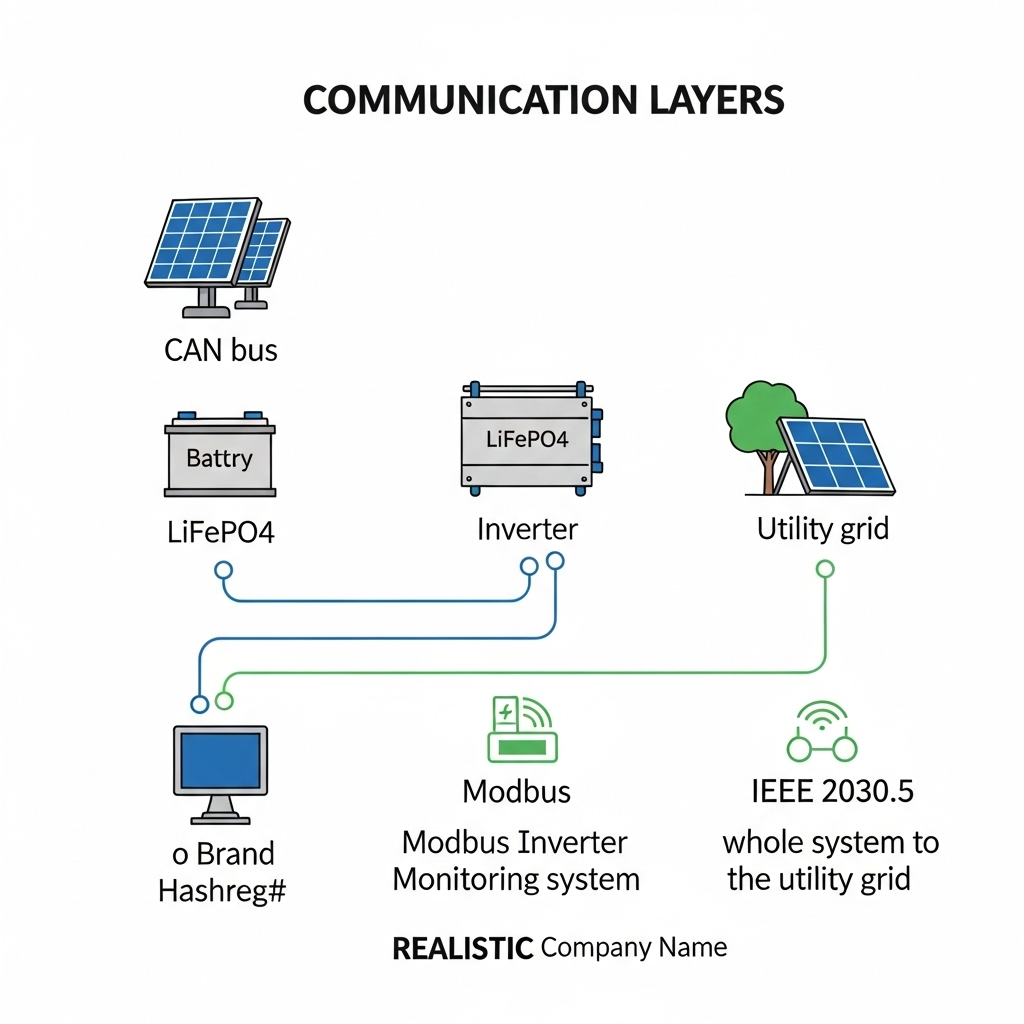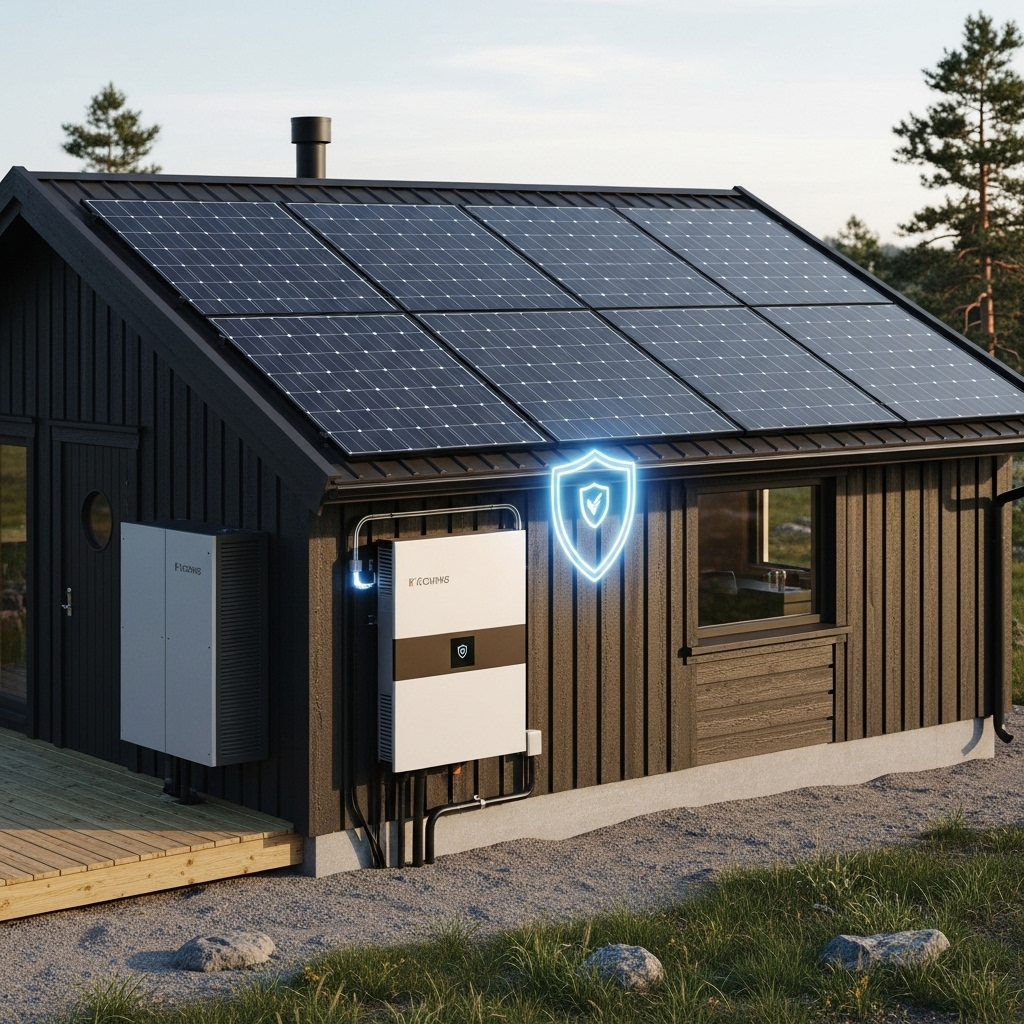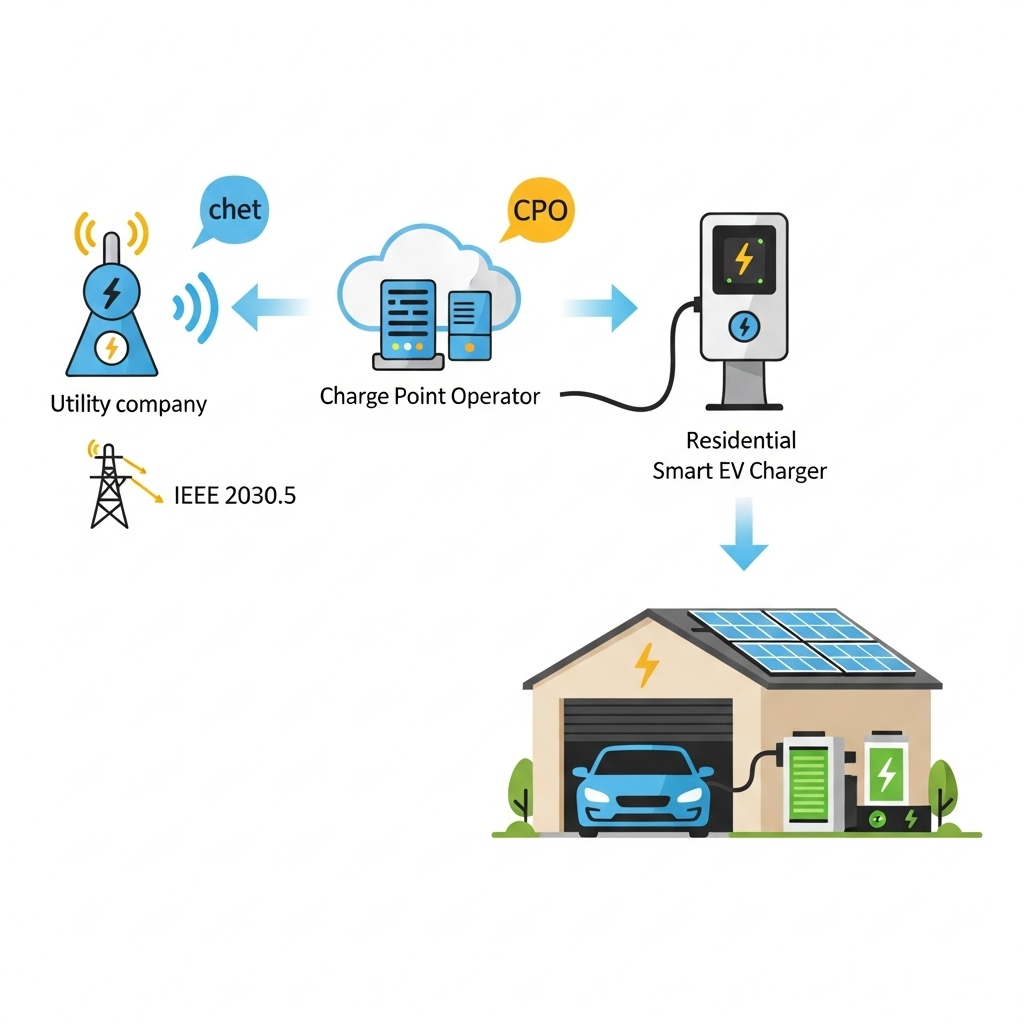In any advanced solar and energy storage system, components must communicate flawlessly. This digital conversation is made possible by communication protocols. They are the rules of language that allow inverters, batteries, and grid management systems to work together. Without them, achieving system efficiency and reliability would be nearly impossible. The primary challenge is interoperability—ensuring devices from different manufacturers can understand each other. This guide clarifies the roles of four key protocols and standards: Modbus, CAN, SunSpec, and IEEE 2030.5, providing clarity for system designers, installers, and owners aiming for energy independence.
Foundational Protocols: The Building Blocks of System Communication
At the core of any energy system are foundational protocols that handle the direct transfer of data. Modbus and CAN bus are two of the most established and widely used protocols in the industry, each with distinct strengths.
Modbus: The Industrial Workhorse
Modbus is a veteran communication protocol that has been a staple in industrial applications for decades. Its design is straightforward and highly reliable, operating on a master-slave principle where a single master device requests information from multiple slave devices. In solar energy systems, you will often find Modbus used for communication between inverters, energy meters, and monitoring systems. It comes in two main variants: Modbus RTU, which uses serial communication (like RS-485), and Modbus TCP/IP, which operates over Ethernet networks. Its simplicity makes it easy to implement and troubleshoot. For more on how Modbus compares in specific applications, see our analysis in CAN bus vs Modbus: choosing a BMS backbone for LFP packs. Its widespread use also means that overcoming proprietary limitations is a common challenge, a topic covered in Stop vendor lock-in: IEC 61850 gateways for legacy Modbus.
CAN Bus: High-Speed and Robust
The Controller Area Network, or CAN bus, is a peer-to-peer protocol known for its high speed and exceptional error-handling capabilities. Unlike Modbus's master-slave structure, any device on a CAN network can broadcast messages, which are prioritized based on their importance. This makes it highly suitable for safety-critical applications. In the energy storage sector, CAN bus is the backbone for Battery Management Systems (BMS). It facilitates real-time communication between the battery cells and the central BMS controller, managing voltage, current, and temperature to ensure both safety and longevity. The robustness of CAN is vital for high-performance, safe, and reliable LiFePO4 (lithium iron phosphate) battery packs, which are central to our integrated energy storage solutions. Exploring its capabilities further is discussed in Myth vs Reality: Is CAN too simple for modern ESS control?. For those involved in development, testing guidance can be found in our Tools Review: testing SunSpec, Modbus, CAN in lab HIL.
| Feature | Modbus | CAN Bus |
|---|---|---|
| Architecture | Master-Slave | Peer-to-Peer (Multi-Master) |
| Primary Use Case | Inverter and meter monitoring | Battery Management Systems (BMS) |
| Speed | Lower (up to 115 kbps on serial) | Higher (up to 1 Mbps) |
| Error Handling | Basic (CRC/LRC checks) | Advanced (message framing, arbitration, auto re-transmission) |
| Cabling | RS-485 or Ethernet | Twisted Pair |
Application-Layer Standards: Creating a Common Language for Solar
While foundational protocols move data, application-layer standards define what that data means. They create a universal dictionary that all components can use, which is the key to true interoperability.
SunSpec Alliance: Standardizing Solar Data
The SunSpec Alliance addresses a critical gap: it creates standardized data models for solar and storage equipment. SunSpec itself is not a new protocol; instead, it defines a common way to structure data that is transmitted using an existing protocol, most commonly Modbus. By requiring devices to present information in a consistent format—for example, ensuring that "inverter wattage output" is always found in the same "place"—SunSpec eliminates the need for custom programming when integrating equipment from different manufacturers. This dramatically simplifies system setup and commissioning, a benefit detailed in our Case Study: SunSpec Modbus slashed ESS commissioning time. Adopting this standard is a crucial step for any bankable solar project, as explained in the Ultimate Guide: SunSpec Modbus for Bankable Solar ESS.
Grid-Level Protocols: Enabling the Smart Grid
As solar and storage systems become active participants in the electrical grid, a new level of communication is needed. Grid-level protocols manage the interaction between distributed energy resources (DERs) and the utilities that oversee the grid.
IEEE 2030.5: The Protocol for Distributed Energy Resources (DER)
IEEE 2030.5 is an internet-based protocol designed specifically for the communication between utilities and DERs like residential solar-plus-storage systems. It is a key enabler of the smart grid, allowing for advanced functions like demand response, remote control, and real-time status updates. This protocol is essential for complying with modern grid codes, such as IEEE 1547, which mandate that DERs must be able to support grid stability. As the energy landscape evolves, IEEE 2030.5 will also be foundational for vehicle-to-grid (V2G) applications. Implementing this protocol can be complex, a process we detail in How to implement IEEE 2030.5 in hybrid inverter fleets. For vendors, passing certification is a critical step, outlined in our Blueprint for DER vendors: passing IEEE 1547 protocol tests.
The Interoperability Challenge: Making Everything Work Together
In a typical advanced energy system, multiple protocols must coexist. The BMS in a LiFePO4 battery pack might use CAN, the solar inverter may communicate via SunSpec Modbus, and the entire system could need an IEEE 2030.5 gateway to connect with the local utility. Making these different technologies work together seamlessly is the ultimate goal of interoperability. Standards like SunSpec act as a bridge, but careful system design is crucial. Choosing components that are built with these standards in mind from the ground up prevents integration headaches down the line. To avoid common issues, review our guide on 9 integration pitfalls with IEEE 2030.5 and SunSpec Modbus. The broader effort to standardize these interactions is explored in the Roadmap: harmonising DER protocols across DSOs in 2025.
Practical Implications for Your Solar and Storage System
Understanding these protocols directly impacts the selection of equipment and the long-term performance of your energy system.
Choosing the Right Components
A grasp of communication protocols helps you select inverters, batteries, and monitoring systems that are designed to work together. This is a core principle behind our integrated energy storage systems. By ensuring our high-performance lithium batteries, hybrid inverters, and management systems communicate fluently out of the box, we provide a reliable and scalable solution that helps customers achieve energy independence without the complexity of component integration.
System Monitoring and Performance
Effective communication is the bedrock of accurate system monitoring. Without reliable data transmission from protocols like Modbus and CAN, you cannot properly track the key metrics that determine your system's health and financial return. To get the most out of your system, it's vital to understand the key metrics that define its health and output. You can learn more about these in our Ultimate Reference for Solar & Storage Performance.
Disclaimer: The information provided in this article is for educational purposes only. It is not intended as financial or legal advice. Please consult with a qualified professional before making any investment decisions.
Looking Ahead: The Future of Energy Communication
The world of energy communication is constantly evolving. The growing adoption of electric vehicles is pushing protocols like IEEE 2030.5 into new territory with smart charging applications, a trend to watch as detailed in Trend Watch 2030: EV smart charging leans on IEEE 2030.5. At the same time, there is a broader push for harmonization across all protocols, with standards like IEC 61850 emerging as a potential universal language. This drive toward standardization is critical for building a truly resilient, scalable, and decentralized energy grid. By choosing solutions built on open standards, you are not just installing a solar system; you are investing in a future of greater energy independence.





Leave a comment
All comments are moderated before being published.
This site is protected by hCaptcha and the hCaptcha Privacy Policy and Terms of Service apply.